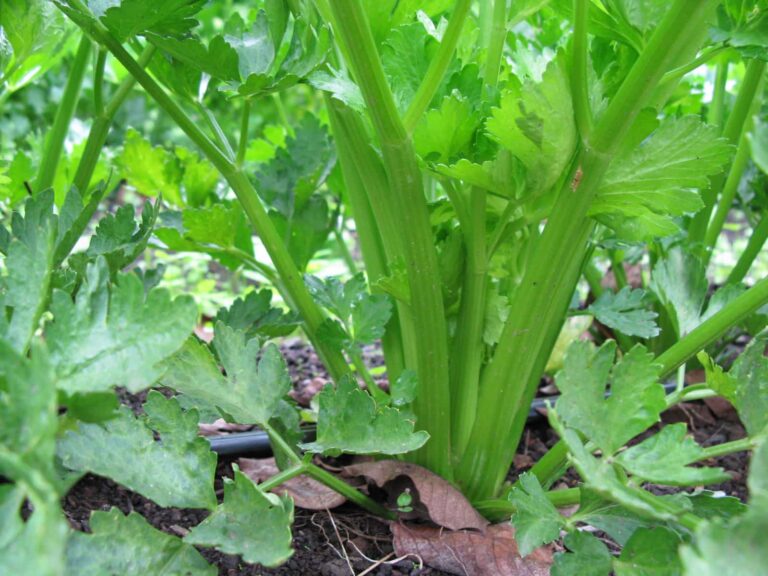How and When to Harvest Pumpkins
Harvesting pumpkins at just the right time is key to rich flavor and long storage life. I’ll show you how to tell when pumpkins are ripe, the best way to harvest without damaging the fruit, and how to cure them for maximum freshness.
Pumpkins are ready for harvest 75 to 115 days from sowing depending on the variety. Pumpkins can be left on the vine until the first frost in autumn is near. Cut pumpkins from the vine two weeks before the first frost and let them cure in the sun.

When to Harvest Pumpkins
Knowing exactly when to harvest pumpkins can mean the difference between a healthy, long-lasting pumpkin and one that quickly rots. After years of growing pumpkins in a variety of conditions, I’ve found that timing the harvest just right—and using a few simple techniques to protect the fruit—helps ensure the best results. Whether you’re growing classic orange pumpkins, white varieties, or unique blue-gray types, recognizing signs of maturity like color, rind hardness, and stem appearance is key. In this guide, I’ll share what I’ve learned about how to tell when pumpkins are ready, and how to protect your crop from cold, rainy weather at the end of the season.
Tips from my experience:
- Harvest pumpkins when they are fully colored and the rinds are hard.
- The color of a mature pumpkin can vary according to variety; mature coloration can be orange, white, gray, or blue-gray.
- A mature pumpkin will have a hard, shiny shell that is not easily dented or punctured by a fingernail. The stem of a mature pumpkin will be hard and shriveled. Pumpkins will rot if harvested too young.
- Harvest pumpkins before the first hard frost. Do not leave pumpkins in the garden if the weather turns cold and rainy or if a freeze is predicted.
- If pumpkins can’t be harvested before cold and rainy weather comes, put hay or straw under them to prevent rot caused by contact with damp soil. (Earlier in the season, as the fruit is ripening, you can place a piece of wood or tile or a piece of cardboard or folded newspaper beneath pumpkins to prevent contact with soil and rot.)

How to Harvest Pumpkins
Harvesting pumpkins takes a little care to ensure your fruits stay in top condition for storage and display. Over the years, I’ve learned that using the right tools, handling pumpkins gently, and preserving the stem are all crucial steps for a successful harvest.
Tips from my experience:
- Cut pumpkins from the vine with a sharp knife or garden lopper. Leave 3 to 6 inches of stem attached to the fruit. The attached stem will protect the fruit from disease and insect attacks.
- Pumpkin vines can be prickly, so protect your skin by wearing gloves and long sleeves when harvesting.
- Handle pumpkins with care to avoid nicking or bruising the skin.
- Lift and carry pumpkins by slipping your hand under the bottom of the fruit. Do not lift or carry a pumpkin by the stem; a heavy pumpkin can detach from the stem, fall, and crack or break. Stemless pumpkins do not store well.
Related Posts Start Here:
Getting Started
- Pumpkin Varieties You’ll Love to Grow
- Choosing the Right Pumpkin: Cooking vs Carving
- Pumpkin Seed Starting Tips
- How to Plant Pumpkins Successfully
- How to Grow Pumpkins in Containers
- Best Companion Plants for Pumpkins
Growing and Care
- Watering, Feeding, and Caring for Pumpkins: A Complete Guide
- Pumpkin Pollination: A Gardener’s Guide
- Common Pumpkin Pests and Diseases (and How to Stop Them)
Harvest and Beyond
- How and When to Harvest Pumpkins
- How to Store and Preserve Pumpkins After Harvest
- Five Ways to Cook Pumpkins
Bonus/Fun
Squash articles at Harvest to Table:
How to Grow Summer and Winter Squash
How to Plant and Grow Pumpkins
How to Harvest and Store Summer Squash
How to Harvest, Cure, and Store Winter Squash
How to Harvest and Store Pumpkins
Eight Ways to Cook and Serve Summer Squash
Seven Ways to Cook and Serve Winter Squash
How to Make Creamy Pumpkin Soup
How to Cook and Serve Squash Blossoms
Squash Growing Problems: Troubleshooting
Squash Vine Borer Organic Pest Control
Squash Bug Organic Pest Control
Corn, Beans, and Squash: The Three Sisters
Garden Planning Books at Amazon:
- Vegetable Garden Grower’s Guide
- Tomato Grower’s Answer Book
- Vegetable Garden Almanac & Planner
- Kitchen Garden Grower’s Guide Vegetable Encyclopedia
More harvest tips:
Learn when and how to harvest your favorite vegetables for the best flavor and texture. Get storage tips for each crop. Click on the vegetable you are growing below.
- Artichoke
- Arugula
- Asparagus
- Beans
- Beets
- Broccoli
- Brussels Sprouts
- Cabbage
- Cantaloupe — Melons
- Carrots
- Cauliflower
- Celery
- Chard
- Collards
- Corn, Sweet
- Cucumbers
- Eggplant
- Endive and Escarole
- Garlic
- Jerusalem Artichoke
- Kale
- Kohlrabi
- Leeks
- Lettuce
- Melons
- Okra
- Onions
- Parsnips
- Peas
- Peppers
- Potatoes
- Pumpkins
- Radicchio
- Rhubarb
- Rutabaga
- Spinach
- Squash, Summer
- Squash, Winter
- Sunchokes
- Sweet Potato
- Swiss Chard
- Tomatillo
- Tomatoes
- Turnips
- Watermelon


